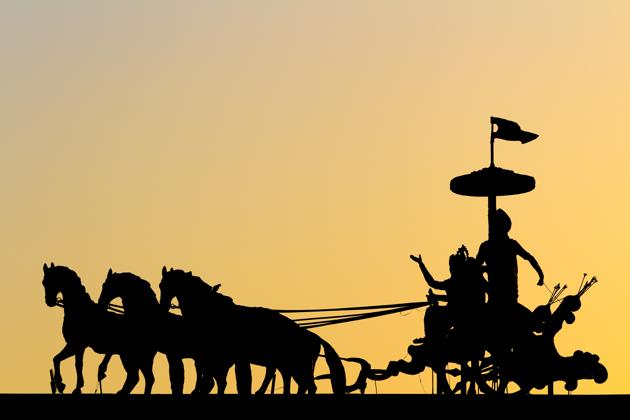Rediscover five precious gems in the Mahabharata
Hinduism is unique in the way that it encourages a personal relationship between the believer and the Great One.
Crooked babas repeatedly bring shame to ‘Hinduism’, whereas the uniqueness of the religion is that its followers are considered capable of forming an independent relationship with God. Priests are but officiants, and only if they know how to recite the slokas properly.

Saints and sages have repeatedly stressed that ‘Naam’ or ‘God’s Name’ is the only kavach or protection in this epoch of Kalyug, an era in which dharma or right conduct drops to its lowest proportion.
Since festival season begins this month, it may be worth our while to recall some dharma points from our spiritual heritage.
Followers of Sanatana Dharma consider the Mahabharata as the saar or essence of the four Vedas, which is why this itihasa or epic is called ‘the Fifth Veda’.
Not only does the Mahabharata contain the Ramayana retold, but also five conversations of note cherished as the Pancharatna or Five Gems.
As a matter of interest, Vyasa’s version of the Ramayana appears in the Vana Parva or Forest Section of the Mahabharata, which is the longest section of ‘the world’s longest epic’.
But the Vana Parva is one of the most popular passages in Indian literature, describing the twelve years that the Pandavas spend in the forest and their many adventures there.
One time, Draupadi is kidnapped by Jayadratha and rescued by Bhima and Arjuna, and Yudhishthira sadly wonders if any man was ever made to suffer as he is suffering. That’s when he is told the story of how Ram, a much worthier hero, was deprived of his kingdom, after which his wife was kidnapped.
The Five Gems are greatly prized because they are mini-compendiums of spiritual teachings. The Pancharatna passages are called the Yaksha Prashna, the Vidur Niti, the Sanat Sujatiyam, the Bhagavad Gita and the Vishnu Sahasra Namam (Thousand Names of Vishnu).
The Yaksha Prashna is the famous ‘riddle test’ on philosophy and morals that a lake spirit disguised as a crane asks Yudhisthira.
The Vidur Niti is the conversation between wise Vidura and King Dhritarashtra about best practices in managing worldly affairs and preparing for the afterlife.
The Sanat Sujatiyam is a follow-up conversation, a dharma capsule about immortality as disclosed to Dhritarashtra by a celestial sage summoned by Vidura.
The complex Bhagavad Gita, revealed by Krishna to Arjuna, is the best-known of the Five Gems. But in some places, it is exceeded in popularity by the simpler Vishnu Sahasra Namam.
The battle of Kurukshetra is over. Yudhisthira is now king. He asks Krishna some very precise questions about God. Krishna directs him to where Bhishma lies on his bed of arrows. Bhishma answers with the Vishnu Sahasra Namam and says, “The Person I’ve described is right here; He’s Krishna”.
Four generations in South India have thrilled to MS Subbulakshmi’s recording of this sturdy paean from Kurukshetra.
Isn’t it time we as a community reclaimed the Naam Granth to protect ourselves from fake teachers?
shebaba@gmail.com
(The views expressed are personal)




